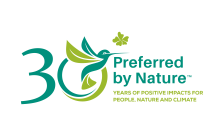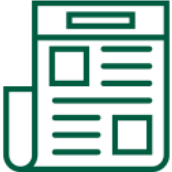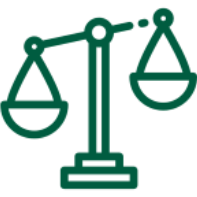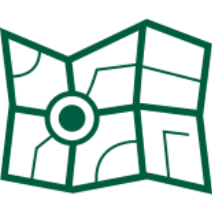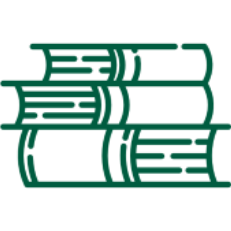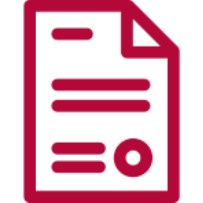Tools available in Vietnamese:
- Hướng Dẫn Giảm Thiểu Rủi Ro Tại Việt Nam (Risk Mitigation guide, V1.0, 2021)
- Danh Sách Văn Bản Pháp Luật Áp Dụng cho Ngành Gỗ tại Việt Nam (List of Applicable Legislation, V1.0, 2021)
Timber Risk Score: 6 / 100 in 2021. The Timber Legality Risk Assessment contains an evaluation of the risk of illegality in Viet Nam for 5 categories and 22 sub-categories of law. We found:
- Specified risk for 16 sub-categories
- Low risk for 1 sub-category
- No legal requirements for 5 sub-categories
This page provides an overview of the legality risks related to timber produced in Viet Nam.
The forestry sector in Viet Nam contributed USD 12.5 billion to the economy in 2020 (Viet Namnews, 2020). The forest sector is growing as Viet Nam becomes a major international manufacturing country.
Nearly half of Viet Nam is covered by forest (15.4 million ha), which is categorized into three main categories:
- Production forests (48%)
- Protection forests (38%)
- Special use forest (14%).
Wood sourced from Viet Nam forests mostly originates from plantations. According to Ministry of Agriculture and Rural Development (2019), the Viet Nam "mass" plantation forests (i.e., not including scattered trees) produced about 16 million m3 of logs in 2019, which is mainly used for processing by the domestic industry. Species most commonly used in forest plantations are Acacia (Acacia spp.), Eucalyptus (Eucalyptus spp.), and rubber.
Illegal logging and trade in illegal timber is a serious problem in Viet Nam and several legality risks are present in Vietnamese timber supply chains. It has been estimated that 30,000-50,000 forest violations are reported per year, and the volume of high-risk imports in 2013 was estimated to be 2.3 million m3 (18% of the country’s wood-based imports) (Chatham House, 2014). Risks of illegal timber produced in Viet Nam are wide-ranging and relate to land tenure, taxes and fees, timber harvesting activities, and trade and transport. If you are sourcing timber from Viet Nam you should take care to ensure the risks identified are not present in your supply chains or have been sufficiently mitigated.
Score: 39 / 100 in 2021
Rank: 110 out of 180 countries in 2021
A temporary ban on import and re-export of round and sawn timber from natural forests of Laos and Cambodia. Valid 1 January 2019 - 31 December 2023.
Harvesting ban for natural forests.
Prohibition of all harvest and export of rosewood (Dalbergia cochinchinensis and Dalbergia oliveri) from the wild for the next five years (from March 2022).
There are currently no armed conflicts in Viet Nam according to the Council on Foreign Relations' Global Conflict Tracker
VPA status: Implementing
CITES appendix II: Aquilaria spp., Dalbergia spp.
FSC Certified Forest Area: 200,120 hectares (1 December 2021).
Information Gathering
Timber sources
- Find out the different sources of legal timber
- Determine which source type your timber comes from
| Timber source type | Description of source type |
|---|---|
|
Plantations |
|
Risk Assessment
Risk assessment summary
|
Legal rights to harvest |
|
|
Taxes and fees
|
|
|
Timber harvesting activities |
|
|
Third parties' rights
|
|
Trade and transport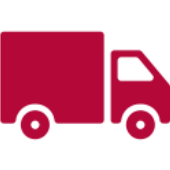 |
|
|
Supply chain transparency and traceability
|
|
Risk Mitigation
Mitigate the risks in your supply chain
Learn which actions we recommended to mitigate the risks associated with the timber sources from Viet Nam.
We have two tools to help you mitigate risks for Viet Nam timber supply chains:
- the Risk Mitigation Guide gives you a detailed overview of risks in Viet Nam, and how to mitigate them. You can see the Risk Mitigation Guide in Vietnamese here.
- the Document Guide provides you with a list of all required documents and examples of key documents and how to use them in mitigating risks.
The tools above give you the most information. Below is a summary of our five recommended actions to mitigate the risks associated with timber sourced from Viet Nam that is not third-party certified
Source Certified Materials
NEPCon believes that third-party certification (for example FSC and PEFC certification) can provide strong assurances of the legality of the products they cover. Companies seeking to mitigate the risks of sourcing illegal timber should seek to purchase third-party certified materials wherever possible.
While the European Timber Regulation does not include an automatic “green lane” for certified products, it does recognise the value of certification as a tool for risk assessment and mitigation. The European Commission says that companies “may rate credibly certified products as having the negligible risk of being illegal, i.e. suitable for placing on the market with no further risk mitigation measures, provided that the rest of the information gathered and the replies to the risk assessment questions do not contradict such a conclusion.”
For more information on using certified materials in your due diligence, including how to assess whether a certification system meets EUTR requirements, see the page on Certification and Due Diligence.
Mitigation recommendations
There are five generally recommended actions to mitigate the risks associated with the timber sources from Viet Nam:
1. Fully map your supply chain
- Our supply chain mapping tool can help you do this
2. Obtain and verify documents
3. Consult with stakeholders
4. Carry out on-site verification
5. Conduct targeted timber testing
